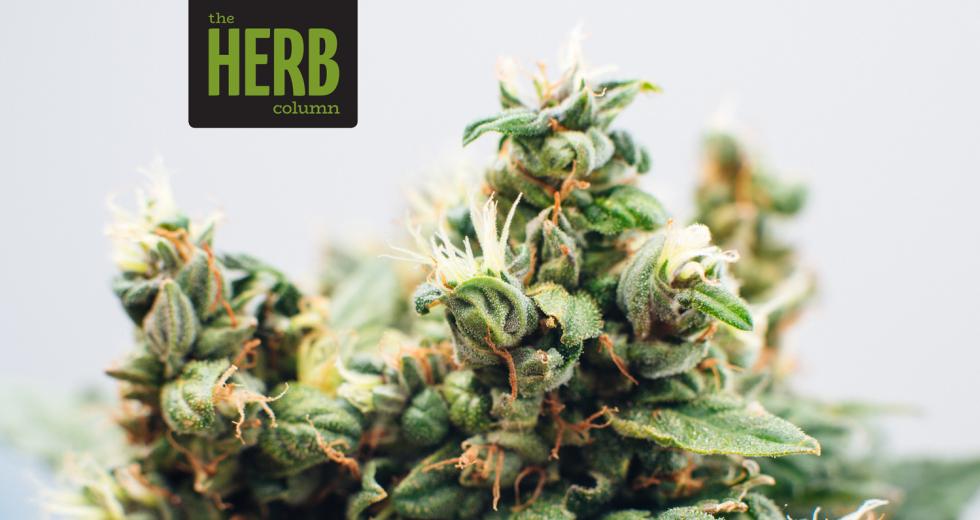Editor’s note: Comstock’s is launching a monthly web series, The Herb Column, focused on the cannabis industry and written by veteran cannabis reporter Brad Branan. Here, Branan introduces THC.
Once when I was covering a marijuana business conference as a cannabis reporter, I was surprised to hear a CEO tell a crowd of wannabe millionaires not to trust anyone in the business. Even more surprising: The audience nodded in acceptance, as if the advice went without saying.
During the eight months I covered cannabis for The Sacramento Bee, I found examples of ethically questionable behavior. A Sacramento company that had previously been paid to keep cannabis businesses operating legally had plans for a big party with marijuana consumption, in clear violation of state law. Others in the industry spread falsehoods about one another, the government and even myself.
The industry wasn’t the only purveyor of questionable information in the cannabis world. Some government officials, unable to break from the Drug War script, seemed misinformed about the risks of cannabis, a plant California voters deemed safe for adult consumption when they voted to legalize it in November 2016.
Getting reliable information about cannabis may be more important than ever, as California and other states implement legalization, and other states consider the same direction. But finding reliable cannabis information has become harder because of another trend — the decimation of newsroom staffs.
Related: Latest Round of Layoffs Hits Sacramento Bee
Related: With a 161-year old legacy to protect, McClatchy is doubling down on media’s digital future
I became a casualty of that trend in May when the Bee laid off about 25 employees. Economic pressures have pushed others off the cannabis beat, too. My predecessor on the Bee’s weed beat, Peter Hecht — one of the nation’s first mainstream reporters assigned to cannabis about a decade ago — accepted a buyout from the company about a year before I took over.
Shortly before my departure, David Downs, who created the cannabis website Green State, announced he was leaving The San Francisco Chronicle for reasons he would not discuss. The Chronicle has kept Green State online, but has not replaced Downs with another staffer dedicated to cannabis.
Perhaps the biggest blow to cannabis journalism came with the virtual shuttering of the website The Cannabist. Founded in 2013 by The Denver Post, The Cannabist made a big splash, attracting worldwide news coverage and the making of a documentary, Rolling Papers.
It was a catchy story because the editors hired two pot critics who smoked weed and wrote about it. But The Cannabist was worth paying attention to because it practiced serious, independent journalism on a subject that had been dominated by advocacy coverage. The Cannabist had cannabis “edibles” tested to see if they were as potent as advertised. Low potency might cause problems for medical marijuana users, while unexpectedly high levels might harm inexperienced consumers. The editors also weren’t afraid to think big, as shown by founding editor Ricardo Baca going to Uruguay to see how legalization worked there.
The Cannabist once employed four journalists and three advertising staffers. The Post’s owners announced they were laying off the remaining staff earlier this year.
The loss of dedicated newspaper coverage in California and Colorado has left the public with few options for independent reporting on cannabis. Industry-backed publications dominate cannabis journalism.
The website Leafly, for instance, is owned by Privateer Holdings, a cannabis investment firm that also has companies producing medical marijuana, edible cannabis and pipes. Leafly regularly publishes the work of top cannabis journalists, including Downs and Hecht, but rarely takes a critical look at the industry or writes about the public-health risks of consumption.
High Times has always been a publication for enthusiasts, but the quality of the work has dropped dramatically and its website is now filled with stories that are rewritten versions of pieces reported by journalists at other publications (including me.)
The Denver-based Marijuana Business Daily has provided some exceptional coverage in California, but its name is all you need to know if you want consumer and public health information. Look elsewhere.
Newspapers will continue to cover cannabis — but without dedicated beat reporters who have the necessary background to cover what I found to be a surprisingly complex topic.
Cannabis was once called pot or marijuana and people were lucky to have a few varieties to smoke. Now there are so many strains that someone even mimicked the periodic table to keep track of them all. People still smoke weed — but they also vaporize, eat and rub it on themselves. (Cannabis comes in topical solutions, too.) Understanding all this is important because cannabis is a drug. It helps people with a stunningly wide array of illnesses. It also gets abused, and there are lung health concerns related to smoking.
While there are no known cases of people dying from a cannabis overdose, taking too much can lead to a very uncomfortable experience. People can also become addicted to cannabis and addiction to any substance can ruin lives. What’s more, there are unsettled questions about what cannabis can do to pregnant mothers and adolescents. The industry generally downplays the risks. Government may be overly cautious in its response to the risks.
Good reporters consider the risks from different perspectives and provide readers with the best information available. With that kind of reporting disappearing, consumers may need to learn how to report for themselves.
Got feedback for Brad? Email editorial@comstocksmag.com




Comments
This is much needed. I know my information could be out of date and I like a watchful eye as well.